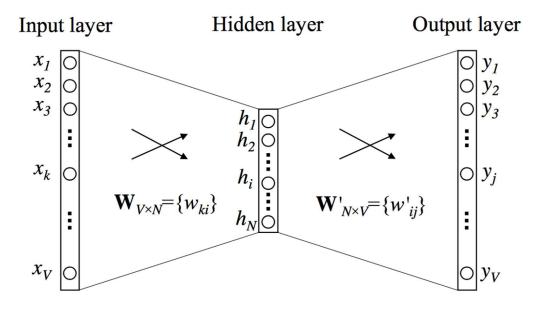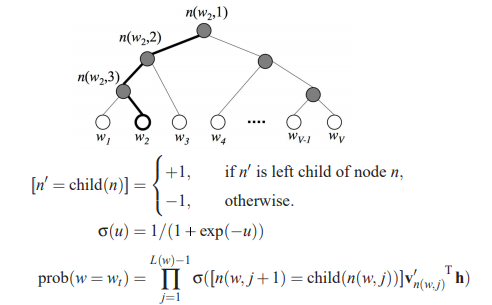Language Processing
Language Processing
Models
- 1-Gram: 1 preceding word, 2-Gram: 2 preceding words
- Rows and columns of words (left then top)
- Normalise each row to sum to 1 (divide by total occurrences) to estimate the probability of a word occurring after another word
- Co-occurrence Matrix
- Each row is a word, each column represents a nearby word
- 10-word window is 5 words on either side
Singular Value Decomposition
- The co-occurrence natrix can be decomposed as $X = USV^T$.
- $U_{(L\times L)}$, are unitary (all columns have unit length)
- $V_{(M\times M)}$, are unitary
- $S_{(L\times M)}$ is diagonal with entries $s_1 >= s_2 >= … >= s_M >= 0$
- Usually L=M=number of words in vocabulary, or M is the number of documents in the collection
- This is expensive, so we use:
- word2vec:
- predictive model
- maximises the probability of a word based on surrounding words
- GloVe:
- count based model
- reconstruct a close approximation to the co-occurrence matrix X
- word2vec:
word2vec

- Say you have a dictionary of V words - each word can be represented in ‘one hot encoding’, e.g. a vector of 0’s with a 1 at a particular location.
- 10000000 could be the word ‘apple’ in dictionary of 8 words
- Input is a one-hot encoded word
- Output, when softmax is applied, is a vector of probabilities
- Each probability represents the chance the word appears nearby the input (context) word
- Hidden units act as an $V\times N$ lookup table - given a V, it will return weights for that V. This is because the input is one-hot encoded.
- Those weights/features are then used with softmax to predict nearby words
Cost function
- Probability that the word j is occurring in the context of the word k:
$prob(word_j|word_k) = \frac{exp(u_j)}{\sum_{j’=1}^V\space exp(u_{j’})}=\frac{exp({v’}_j^Tv_k)}{\sum_{j’=1}^V\space exp({v’}_{j’}^Tv_k)}$
- Cost is the log of this. We want to maximise:
$1/T\sum_{t=1}^T\sum_{c}log prob(w_{t+r}|w_t)$
Extensions for word2vec
- Continuous Bag of Words
- Have multiple inputs (words) that return one possible nearby word
- All inputs have the same weights $W_{V\times N}$
- Skip-Gram Model
- Have multple nearby outputs (words) from the one input
- All outputs have the same weights $W’_{N\times V}$
Efficiency of word2vec
- Hierarchical Softmax
- Instead of calculating softmax for all words, have the output correspond to a branch of a tree
- Only nodes visited along the path to target word are evaluated ($log_2(V)$ nodes)
- Each path is a sigmoid function, each path represents a probability and you multiply the probabilities
- Frequency of words on left children are about the same as frequency of right children (Huffman property)

- Subsampling
- Diminish the influence of more frequent word
- Discard words with a probability based on the frequency of the word. $t ~ 10^-5$
$P(w_i) = 1-\sqrt{\frac{t}{f(w_i)}}$
- Negative Sampling
- Update only a small number of weights, rather than all of them, for the word pair
- Choose a small number of ‘negative’ words (words that we want the network to output 0 for) and update those weights
- Around 5-20 for small datasets, 2-5 for large
- Also update the ‘positive’ word
- Error:

- use unigram distribution for the selection of negative samples. This is its weight equal to frequency raised to 3/4 power.
$P(w_i) = \frac{frequency(w_i)^{3/4}}{\sum_{j=0}^nfrequency(w_j)^{3/4}}$
Which is equivalent to:
P(w) = U(w)3/4/Z
U(w) = Unigram distribution determined by previous word, Z = normalizing constant.
- http://mccormickml.com/2016/04/19/word2vec-tutorial-the-skip-gram-model/
Multi-modal Skip-Gram
- Augment skip-gram model to label features from images with words
- Extract activations $u_j$ for each word from highest layers of a CNN model

Applications for Translation
- Neural translation
- Convert from English to French
- Last LSTM hidden unit encodes entire English sentence
- Decoded into French in reverse
- Bidirectional Recurrent Encoder
- Words from later tells you current meaning - one LSTM going forward direction, the other going in the reverse direction
- Attention Mechanism
- Instead of only taking the last hidden unit, take the weighted sum of all hidden units in the RNN/LSTM. Weights chosen by backpropogation
- Focuses attention on those timesteps which are most relevant for choosing the next word in the translated sentence.
- Focuses attention on part of the sentence we are translating via the weights
- Google Neural Machine Translation
- Stacked LSTMs, with each feeding in to more layers
- Skip connections
- Captioning with Attention
- Image (CNN weights) replaces the sentence input